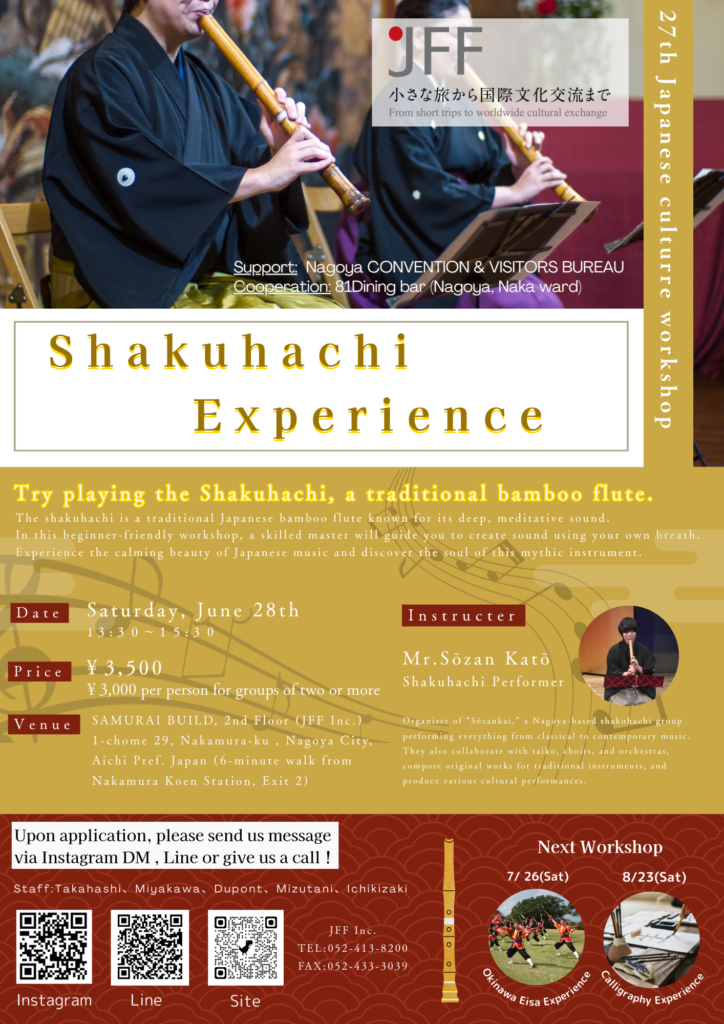SAMURAI BUILD 2F,
1-29 Katori-cho, Nakamura-ku,
Nagoya, Aichi Prefecture, Japan
NIJO CASTLE: Impressive former Imperial Villa
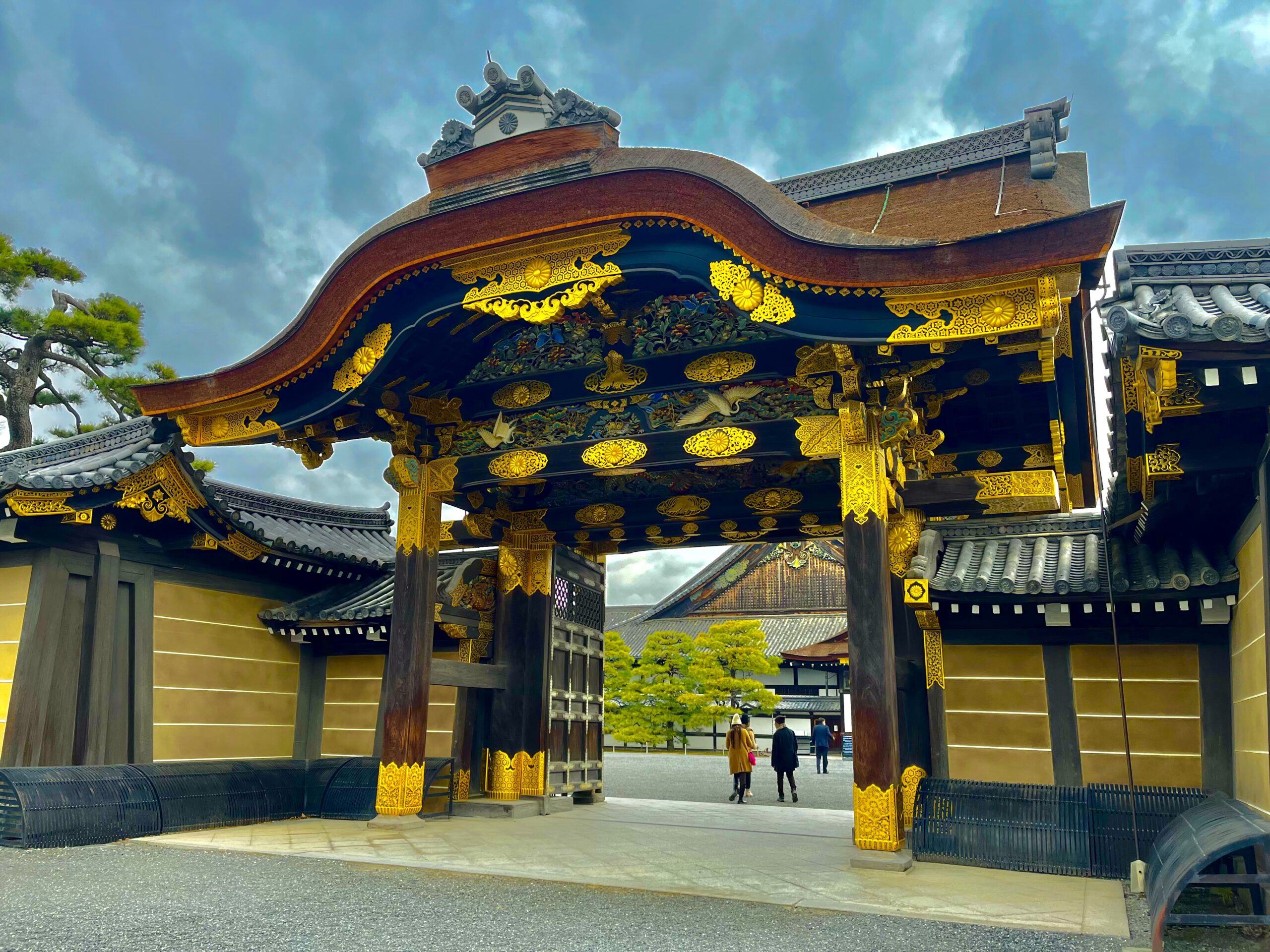
Nijo Castle (二条城) is located in the center of Kyoto and it is near to the Kyoto Imperial Palace. This is a striking example of a feudal castle since given that it is rooted to the Tokugawa Clan, a powerful family whose members ruled Japan as Shoguns from 1603 to 1867.
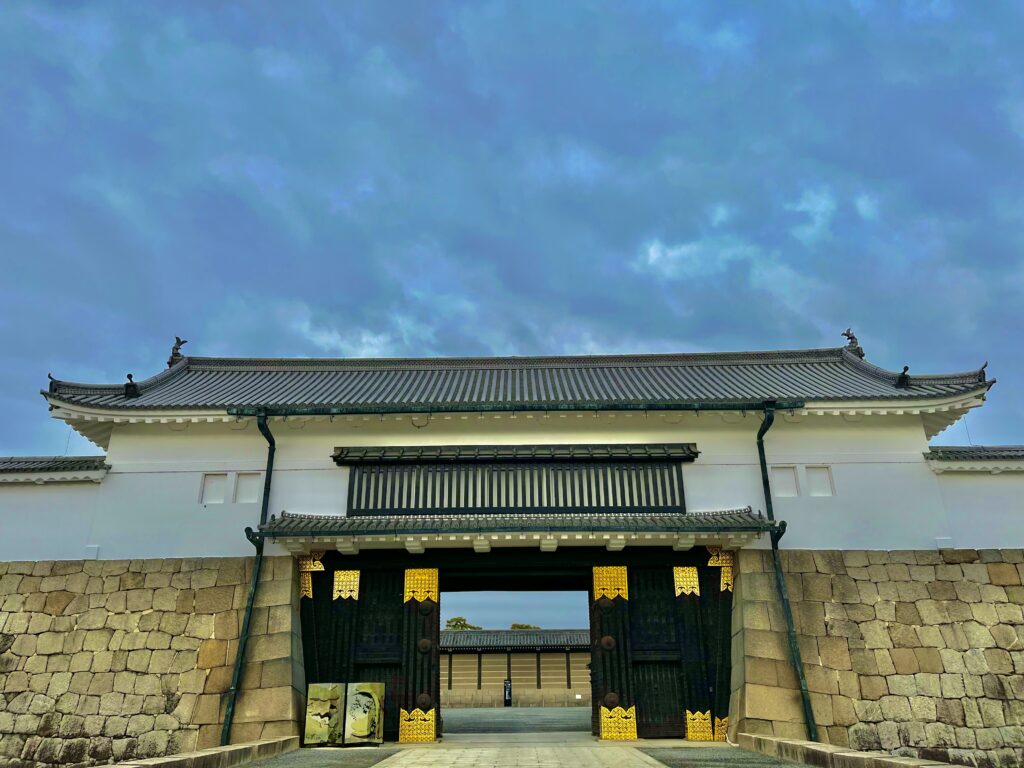
Moreover, Nijo Castle hosts many events throughout the year. In spring, during the “Nijo Castle Cherry Blossom Festival”, you can admire the light-up of 300 sakura trees including 50 varieties such as Yama-zakura cherry or Somei Yoshino cherry during spring while in autumn you can enjoy the beauty and the brillant colors of red maple, golden ginkgo and other trees.
HISTORY OF NIJO CASTLE
This is the perfect place to admire the prestige of samurai warlords, literally a must-see for tourists.
The construction started in 1569 by the warlord Oda Nobunaga and was completed in 1603 by Tokugawa Ieyasu, the first Shogun of Edo Period (1603-1867) as his own residence when he visited Kyoto.
Ieyasu used Nijo Castle as a starting point for one of his most important military campaigns: the conquest of Osaka Castle.
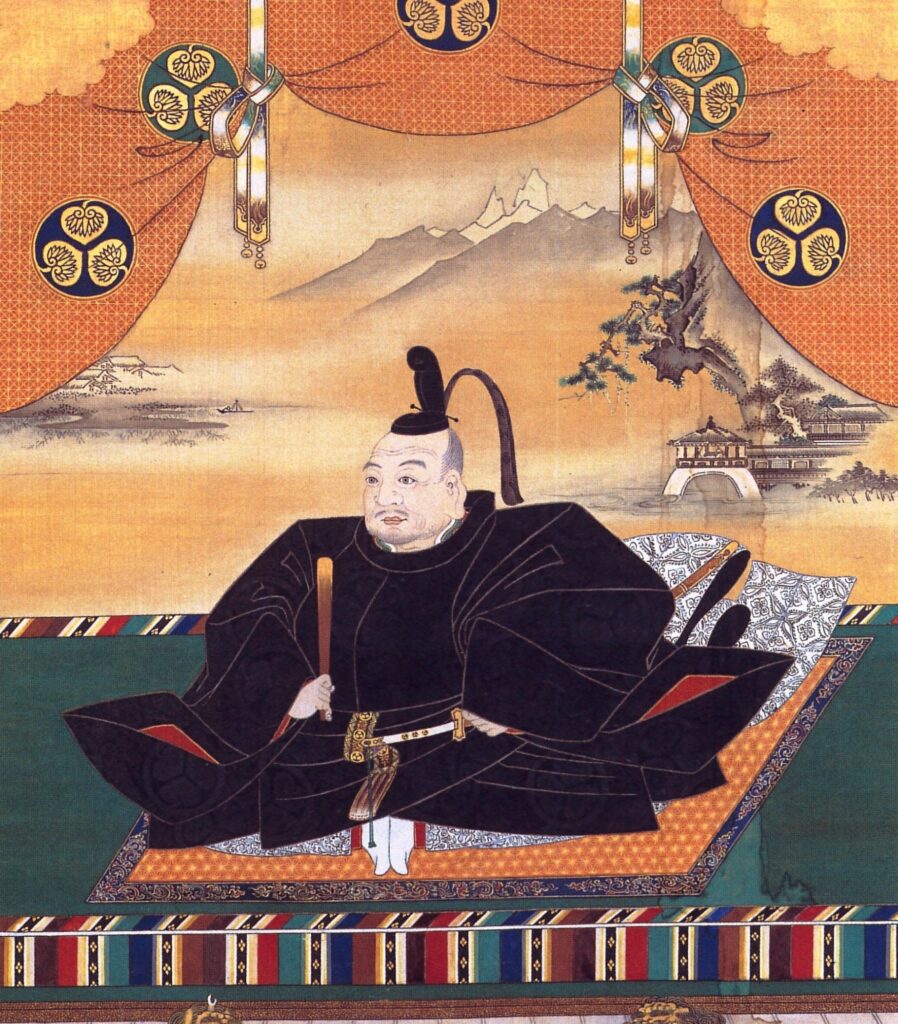
However, in 1867 the Tokugawa Shogunate declined and the power returned to the Japan`s imperial family. From 1868 to 1939 Nijo Castle was used as the Imperial Villa, then it was donated to the city and opened up to the public as a historical site.
Furthermore, in 1994, it was registered as a UNESCO World Heritage Site as you can see from the byobu screen below positioned in front of the main entrance of the Castle.
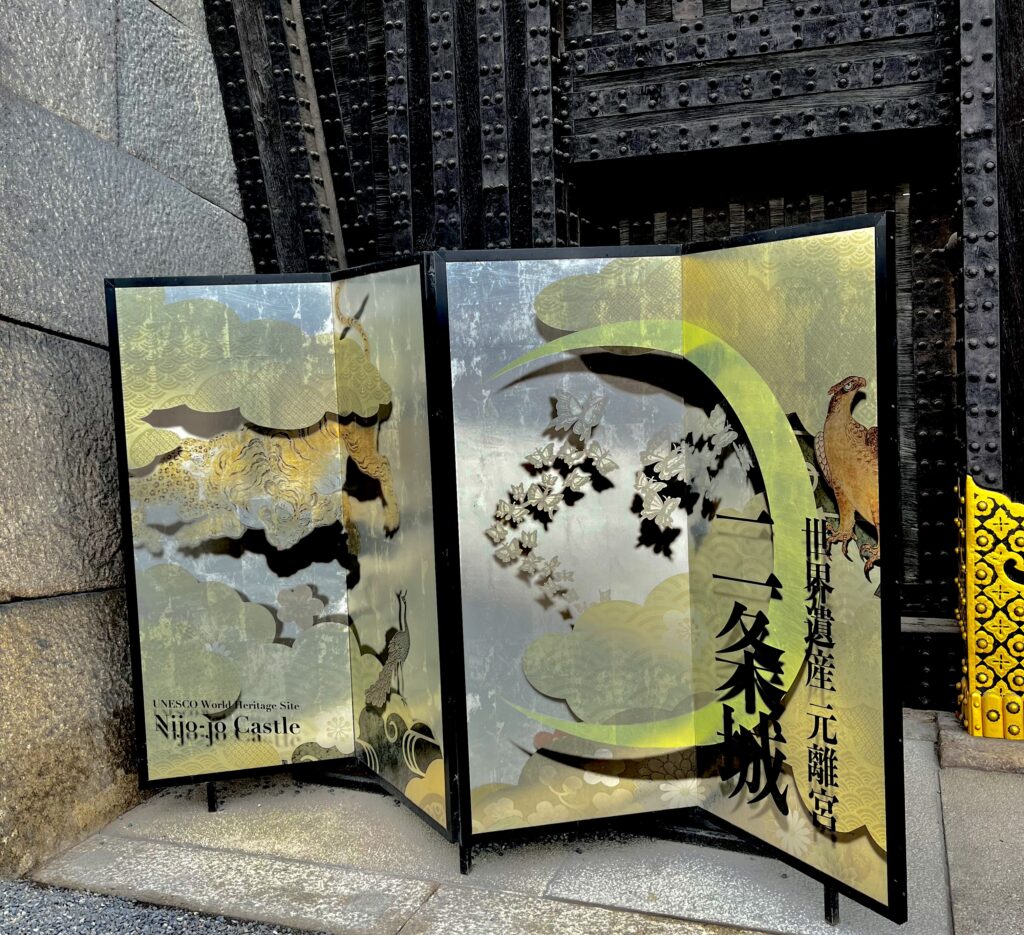
THE STRUCTURE OF NIJO CASTLE:
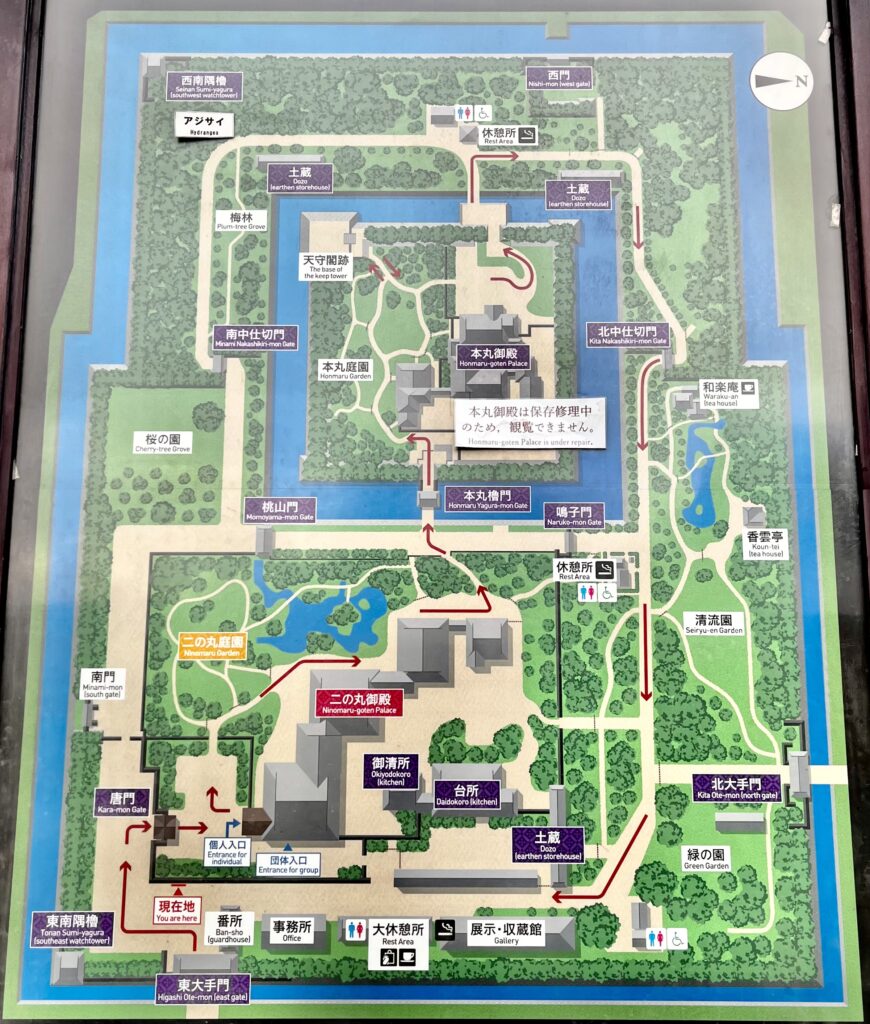
The Castle consists of two concentric Kuruwa fortifications: the Ninomaru Palace, the ruins of Honmaru Palace and various support buildings and gardens around them. The entire Castle and the Honmaru are surrounded by stone walls and moats filled with water.
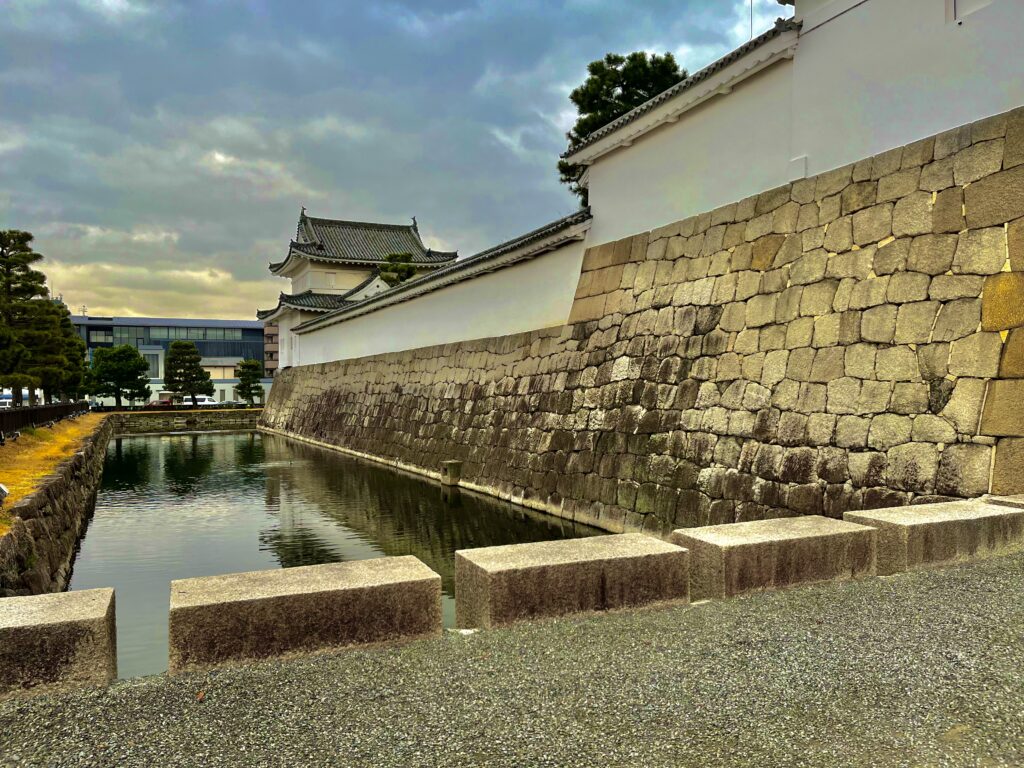

NINOMARU PALACE AND ITS GARDENS
NInomaru Palace is the most important attraction at Nijo Castle and its main entrance is a Karamon gate, a chinese-style gate, symbol of power and authority during the Tokugawa Shogunate. It is famous for its gorgeous gold leaf and golden craving decorations both on the front side and on the back side.

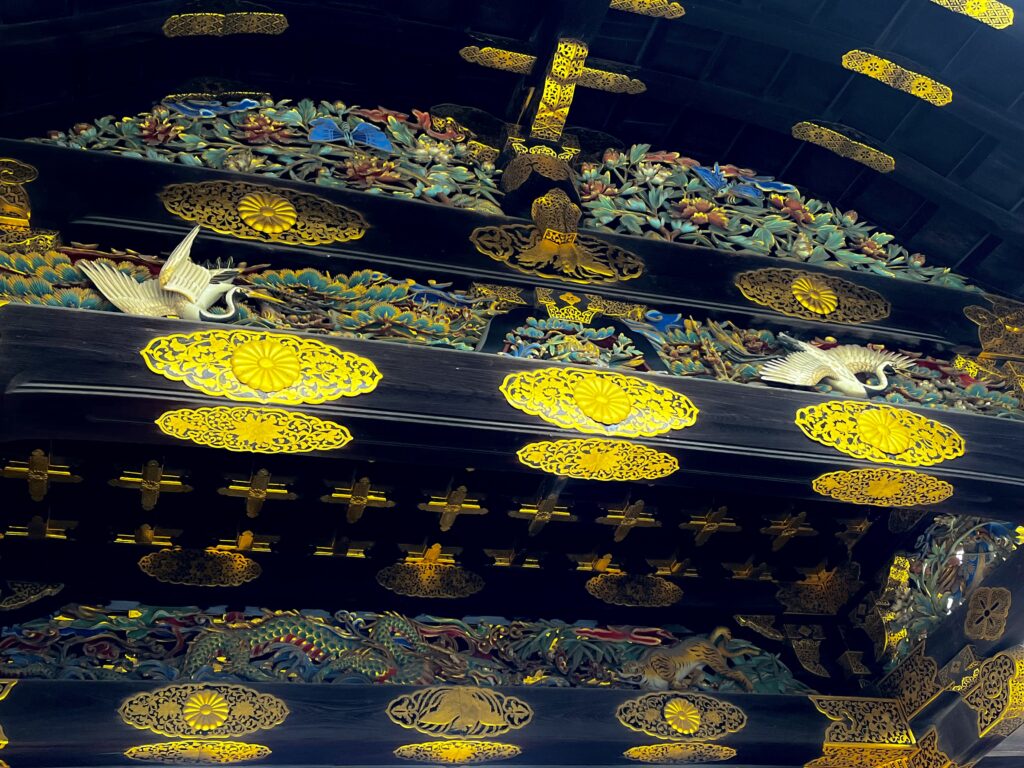

Once you pass through the Karamon gate, you will see Ninomaru Palace, a complex of five separate buildings arranged in a diagonal line from the southeast to the northwest with 33 rooms and over 800 tatami mats. The whole construction is made of Hinoki cypress wood and its architectural style is the so-called Shoin-Tsukuri, an elegant style of the warrior class featuring spacious room, painted walls and sliding door.
There are over 3.600 wall paintings painted by Kano Tan`yu (replicas) of the Kano School of painting. The subjects include pine and hawk, tigers, and leopards, cherry blossoms and other flowers representing the four seasons.



Tozamurai: is the first and the largest section of the Palace. It served as waiting rooms for feudal lords when they visited the Palace.
Shikidai (Reception Room): here the visitors to the Castle would present gifts for the Shogun. Any business or message for the Shogun were first communicated here.
Ōhiroma (Grand Hall): is the main section of the Palace and contains the official audience rooms where the Shogun met with feudal lords and the Imperial Court nobility.
Kuro-shoin (Smaller Grand Hall): here the Shogun met with high-ranking court nobles and with feudal lords with close ties to the Tokugawa family, hence the more intimate nature of the architecture.
Shiro-shoin (literally sitting room): this room was designed as the Shogun`s private quarter featured by a calm and quiet atmosphere, and surrounded by ink wash chinese-themes paintings.
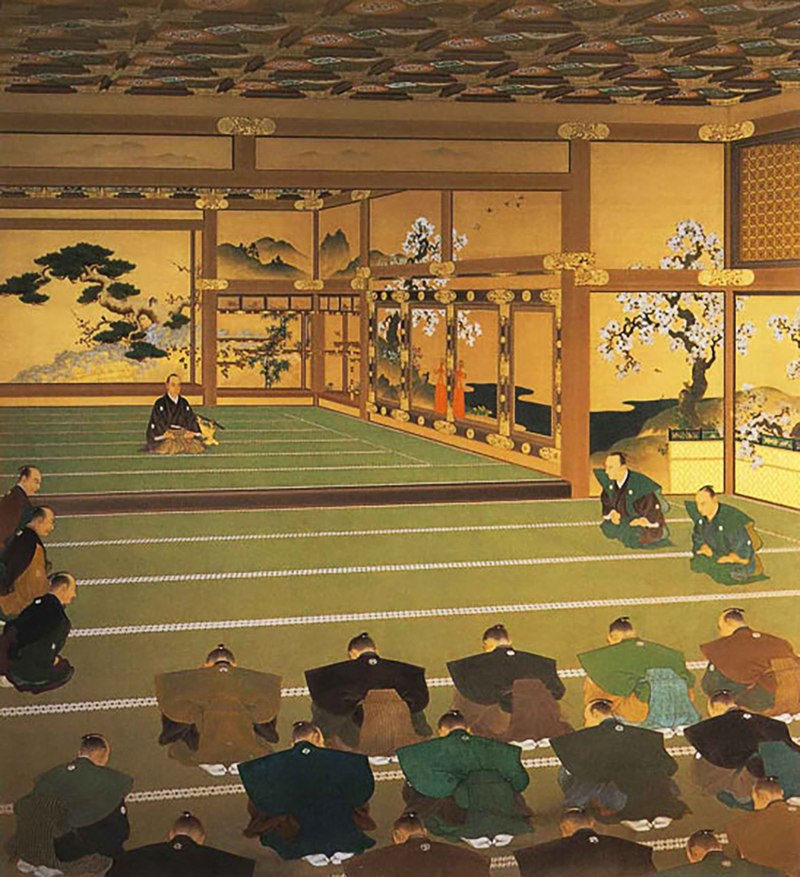
Source: Wikipedia

Source: Wikipedia
Unfortunately, photography is prohibited inside the palace for the protection of the tangible cultural property of the national treasure, but we invite you to try out the Usguisubari nightingale floor, Ninomaru Palace`s unique security warning system. Nightingale floors are designed in a way to make a sound similar to a bird chirping when someone walks upon them. These creaking floors were installed intentionally in order to in order to make it difficult for intruders to enter buildings. Interesting, isn`t it?
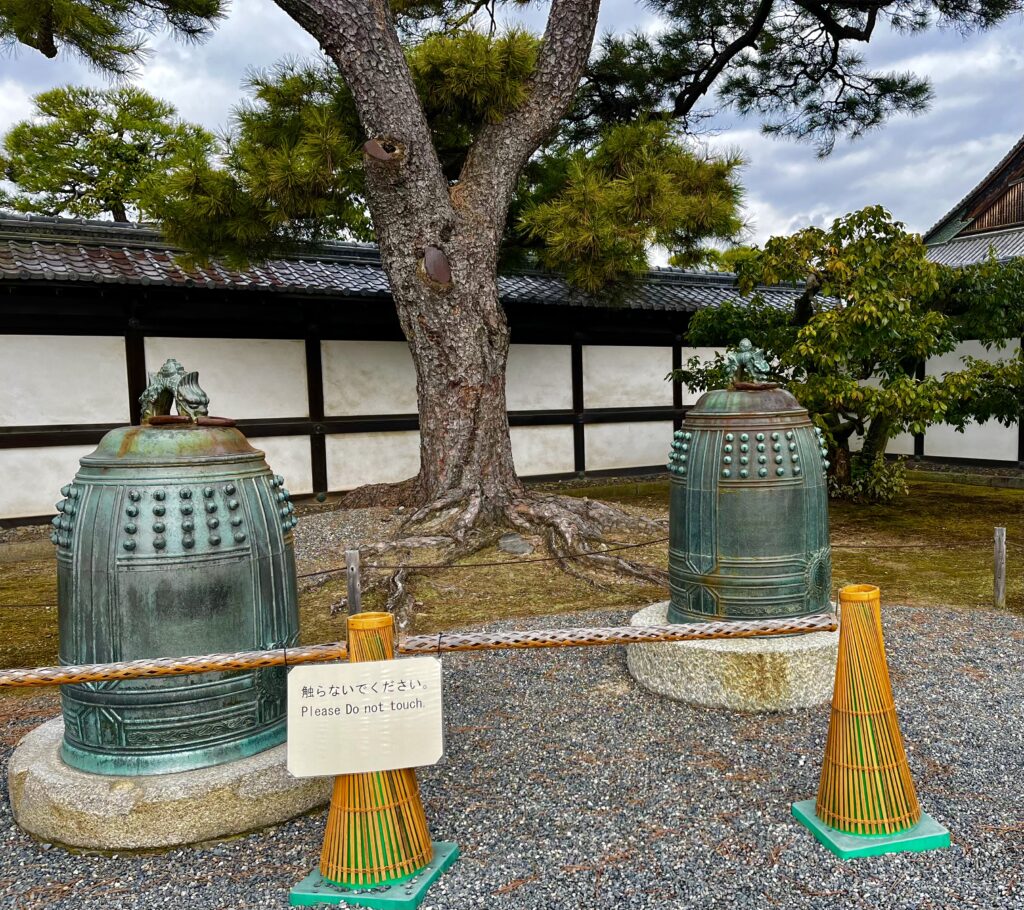
Two Hanging Bells are placed outside Ninomaru Palace and they were used in order to inform the surrounding population of fires and other emergencies.
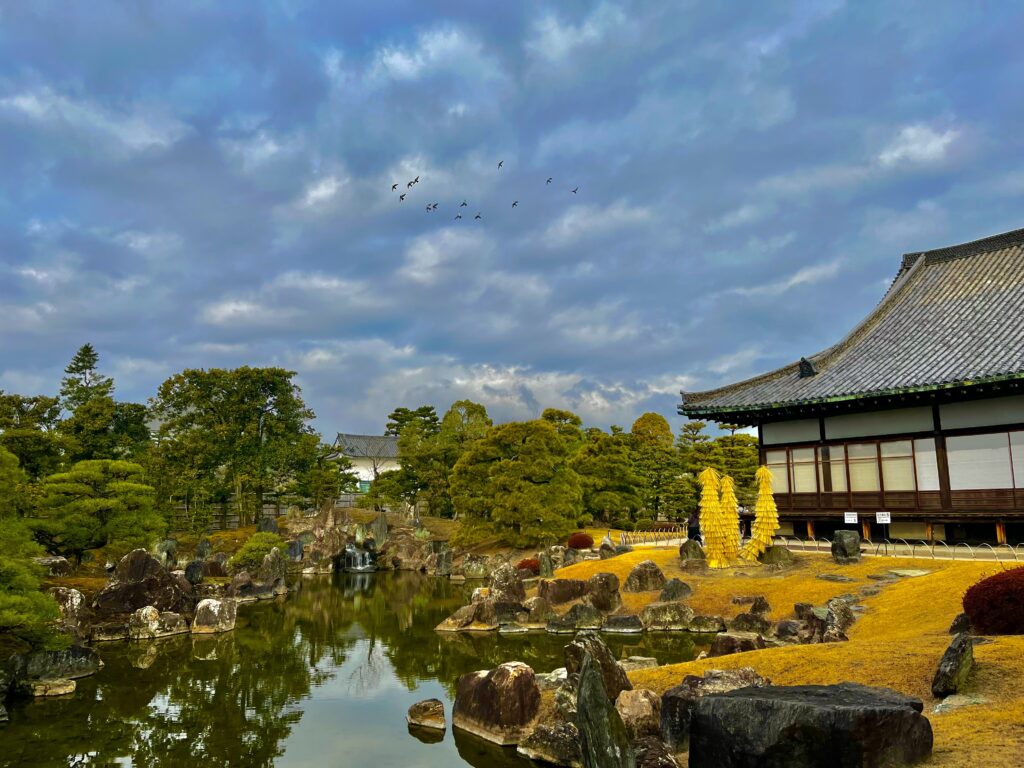
Ninomaru Palace garden
Outside the Palace it extends the Ninomaru beautiful traditional Japanese garden, which is also built in Shoin-Tsukuri style. It features a large pond, ornamental stones and pine trees. The Horai-Jima Islet is located in the center of the pond and it represents Paradise. At its side there are two small islands, the turtle and the crane one, symbolizing longevity. Also other Buddhist buildings and Temples in Kyoto such as Kinkaku-ji and Ginkaku-ji (The golden and the silver pavilion) are characterized by “Shoin-Tsukuri” composition style.
On the right, there are three Japanese Sago Palms wrapped with straw for protection during the winter since Sago Palms, as tropical plants, cannot tolerate low winter temperatures. This gardening task, which has been conducted annually for at least 65 years, usually takes place sometime around late November to early December.

THE BEAUTY OF CAMELIAS IN WINTER
Nijo Castle is home to a variety of flowers and trees, in fact you will always find a seasonal bloom depending on the season of your visit.
In winter, for example, the protagonists are camelia and plum flowers. Camelias have been planted at Nijo Castle around 1953 and, nowadays, the Castle hosts one of the most rare and elegant camellia collections in Kyoto consisting of 300 hundred camelia trees and 50 different species blooming around December to Mid-April. If you are interested in camelia, then Nijo Castle is a must!
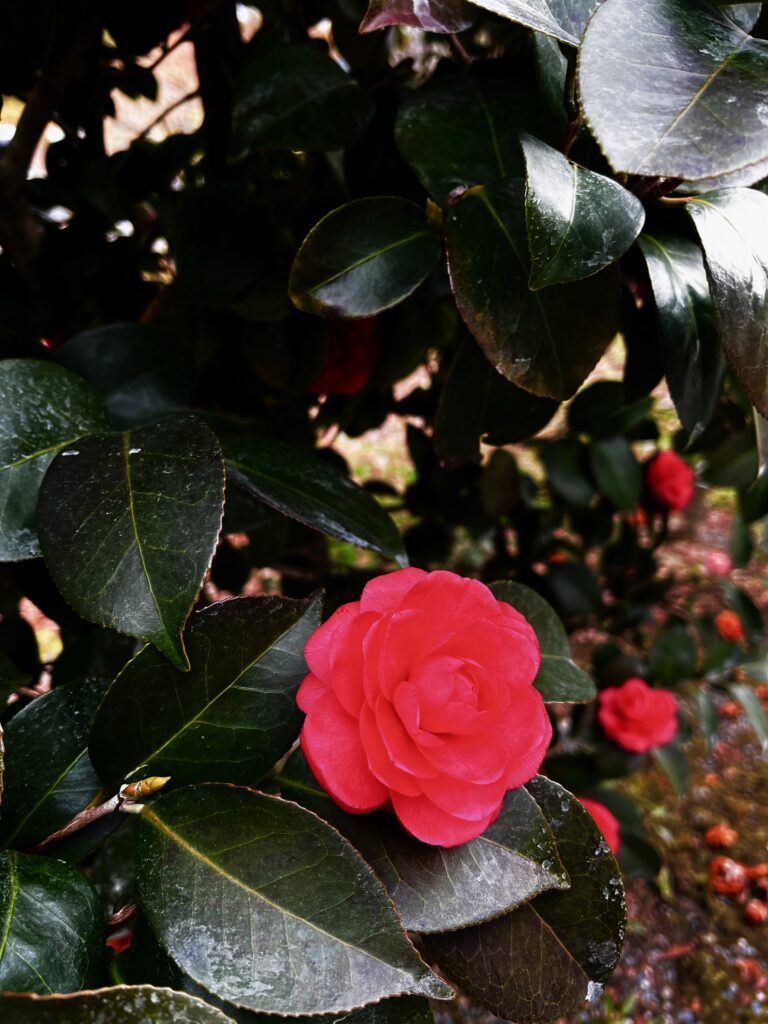

SEIRYU-EN GARDEN:
The Seiryu-en Garden appeared in the north of the complex in 1965, the materials for the buildings, such as garden stones and trees belonged to the Ryoi Sumino`s residence, a wealthy Kyoto merchant house.
This is a modern green area combining Western and Japanese styles and here is where the Tenshu Tower (highest Tower within the Castle) was said to be when Nijo Castle was first built. It was demolished in the Meji Era and replaced with a garden.The west side is a Japanese-style garden with a trail around the pond featuring also two tea fine tea houses: the Waraku-an and Koun-tei. The east side is a western style garden with a grass lawn.
Nowadays, a lot of cultural events are held at Seiryu-en Garden. Moreover, there are over 1.000 rock compositions and two fine tea houses.
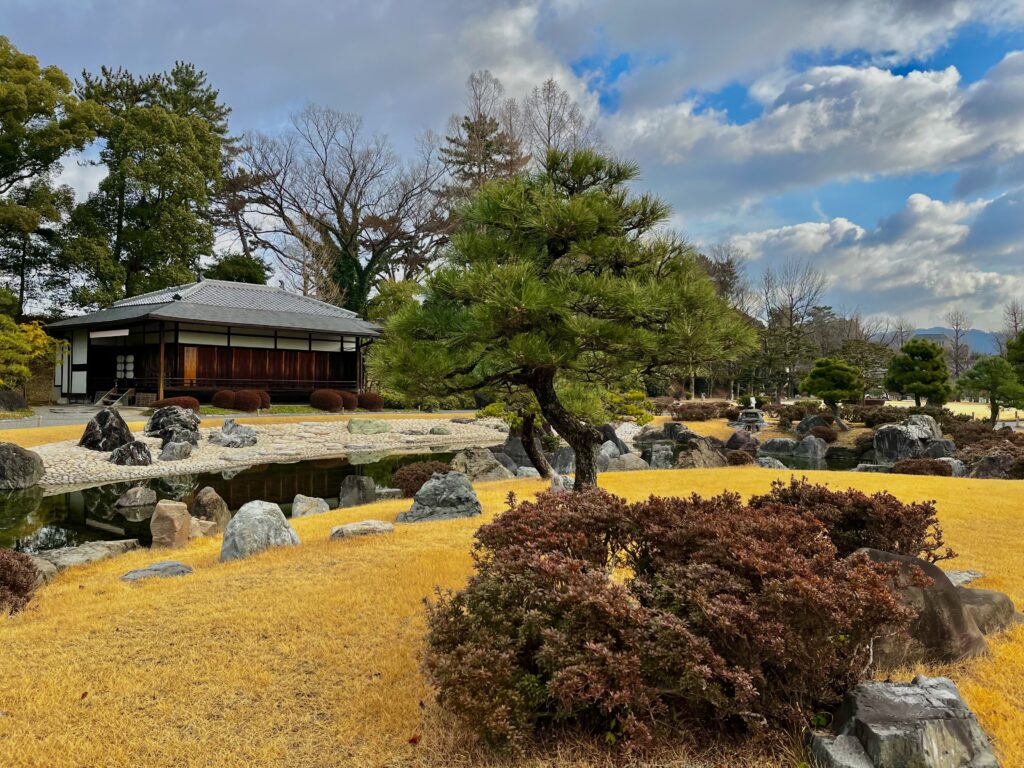
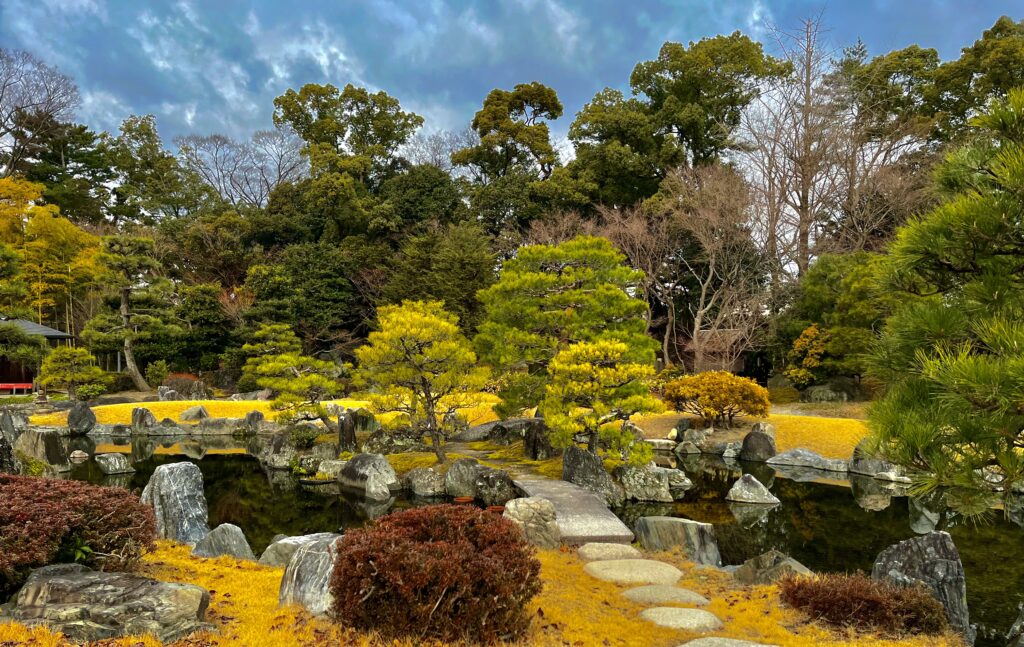
ENJOY YOUR BREAK!
It takes around 2 hours in order to visit the Nijo Castle, including the inside of Honmaru Palace.
After enjoy walking around the Castle, you can take a break in the resting area and try the most popular item such as the Golden Soft Ice Cream whose topping vary according to the season and the refreshing Green Tea Matcha beer. The golden part presents in both of them, refers to the gold leaf that decorates the forniture of the Castle.

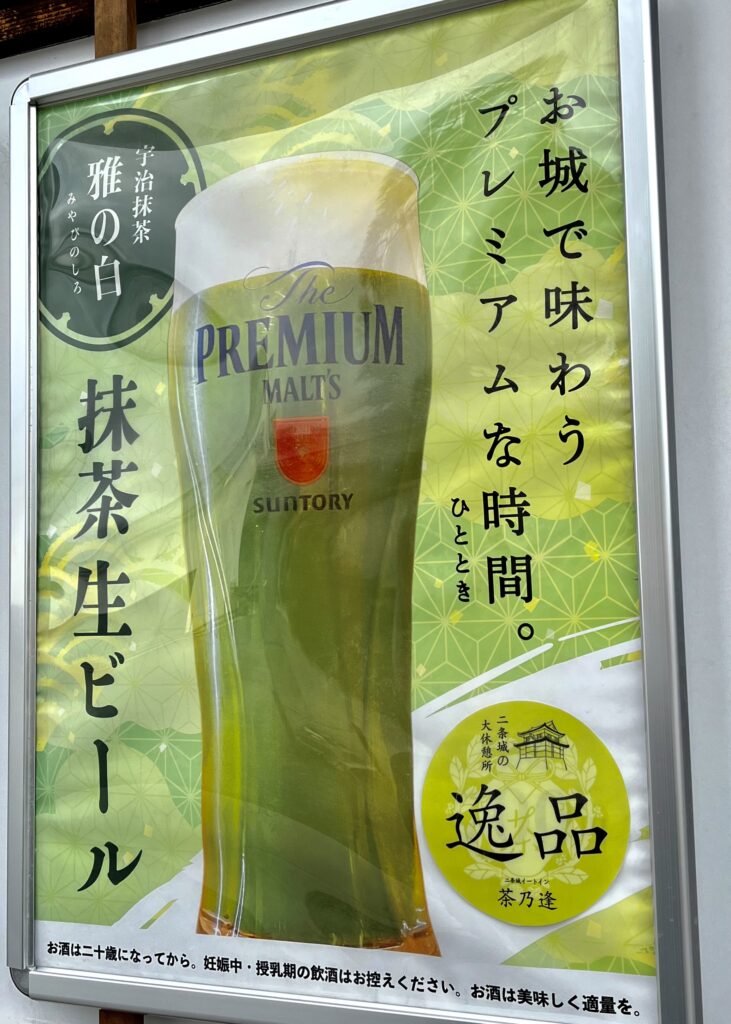
- category: Kyoto

